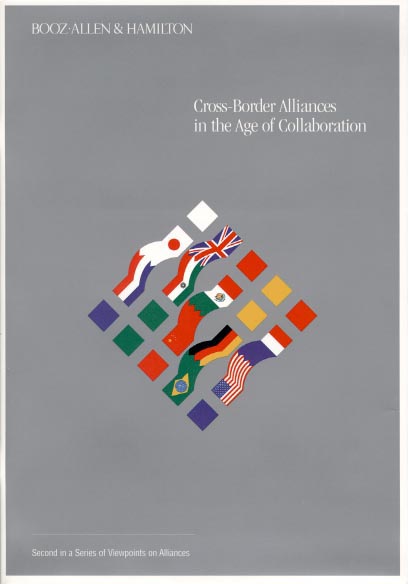Viewpoints
on Strategic Alliances
Cross-Border
Alliances in the Age of Collaboration (1995)
 By John
R. Harbison and Peter Pekar, Jr.
Phd
By John
R. Harbison and Peter Pekar, Jr.
Phd
This Strategic
Alliances Viewpoint, the second in a series, focuses on the
role of cross-border alliances in today's era of the extended
enterprise.
The discussion covers the momentum behind cross-border alliances,
pitfalls
to avoid, best practices, the future role of strategic cross-border
alliances, and implications for management.
Flourishing cross-border arrangements are changing the global
business
environment in most industries. The global demands on technology
and
financial resources are forcing companies to ally in order to
compete, often
at the same time that industry boundaries are blurring and new
capabilities
are becoming more critical. In this age of collaboration, self-reliance
is
an option few companies can afford.
BA&H has identified a number of traps to avoid when undertaking
cross-border
alliances:
· Believing
they are our kind of people: failing to take the time to select
the right partner
· Until death do us part: failing to agree on objectives
and goals
· No paroles, no pardons: failing to plan for flexibility
and change
· Relying on U.N. peace-keeping: counting on third parties
to come to the aid of disagreeing partners
· Assuming no child support: failing to plan properly
for continuing resource requirements and the consequences
of a termination of the alliance
Avoiding
these pitfalls is not enough to ensure success: a disciplined
process of alliance formulation is essential, as is regard for
regional variance
in alliance skills, concerns and issues, and an institutionalized
alliance
capability. (These topics are discussed in detail in the other
Viewpoints from
the Strategic Alliances series.)
Judging
from the many recently announced cross-border partnerships, an
increasing number of global enterprises recognize that strategic
alliances
can provide growth at a fraction of the cost of going it alone.
In addition
to sharing risks and investment, a well-structured, well-managed
approach to
alliance formation can increase efficiency and productivity and
help an
organization leverage its resources.
|

